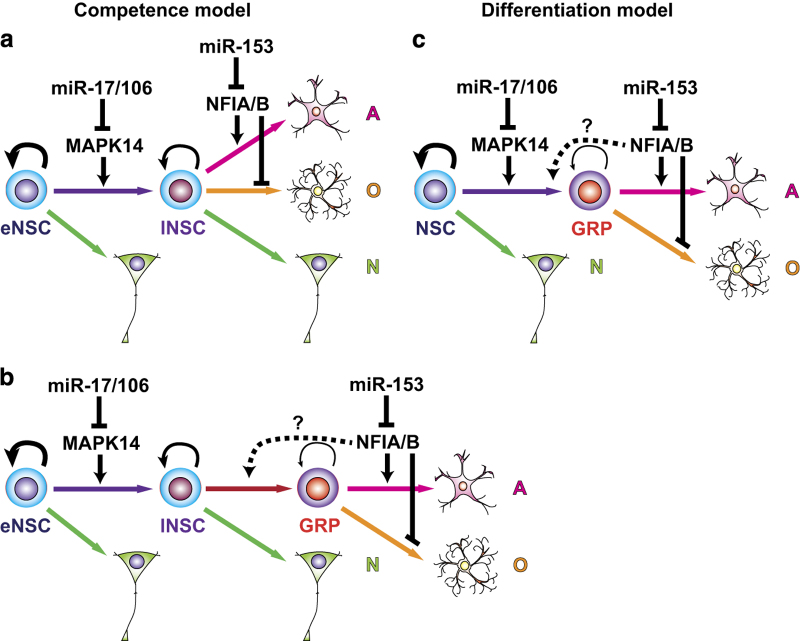Figure 2.
Schematic models for the acquisition of gliogenic competence and involvements of miR-17/106-MAPK14 axis and miR-153-NFIA/B axis. (a, b) Competence models: early-neurogenic NSCs (eNSC), which generate only neurons (N) become late-gliogenic NSCs (lNSC) acquired gliogenic competence to differentiate into astrocytes (A) or oligodendrocytes (O) directly and/or indirectly through the glial-restricted progenitor (GRP) state in response to gliogenic signals. miR-17/106b may be required for the maintenance of eNSC state via repression of MAPK14. miR-153 represses NFIA/B expressions which are essential for astroctytic differentiation of NSCs and/or GRPs. It is not clear whether NFIA/B are required for the differentiation of NSCs into GRPs. (c) Differentiation model: NSCs rarely differentiate into GRPs in the early-neurogenic period. miR-17/106b may be required for the maintenance of neuropotency and/or inhibition of differentiation of NSCs into GRP via repression of MAPK14. The role of miR-153-NFIA/B axis is same as that in the competence models. NFIA has also been shown to suppress oligodendrocyte differentiation.

